Cinnabar moth - Goutte de Sang - Tyria jacobaeae (2)
MACRO PHOTOGRAPHY of the Cinnabar Moth caterpillar!
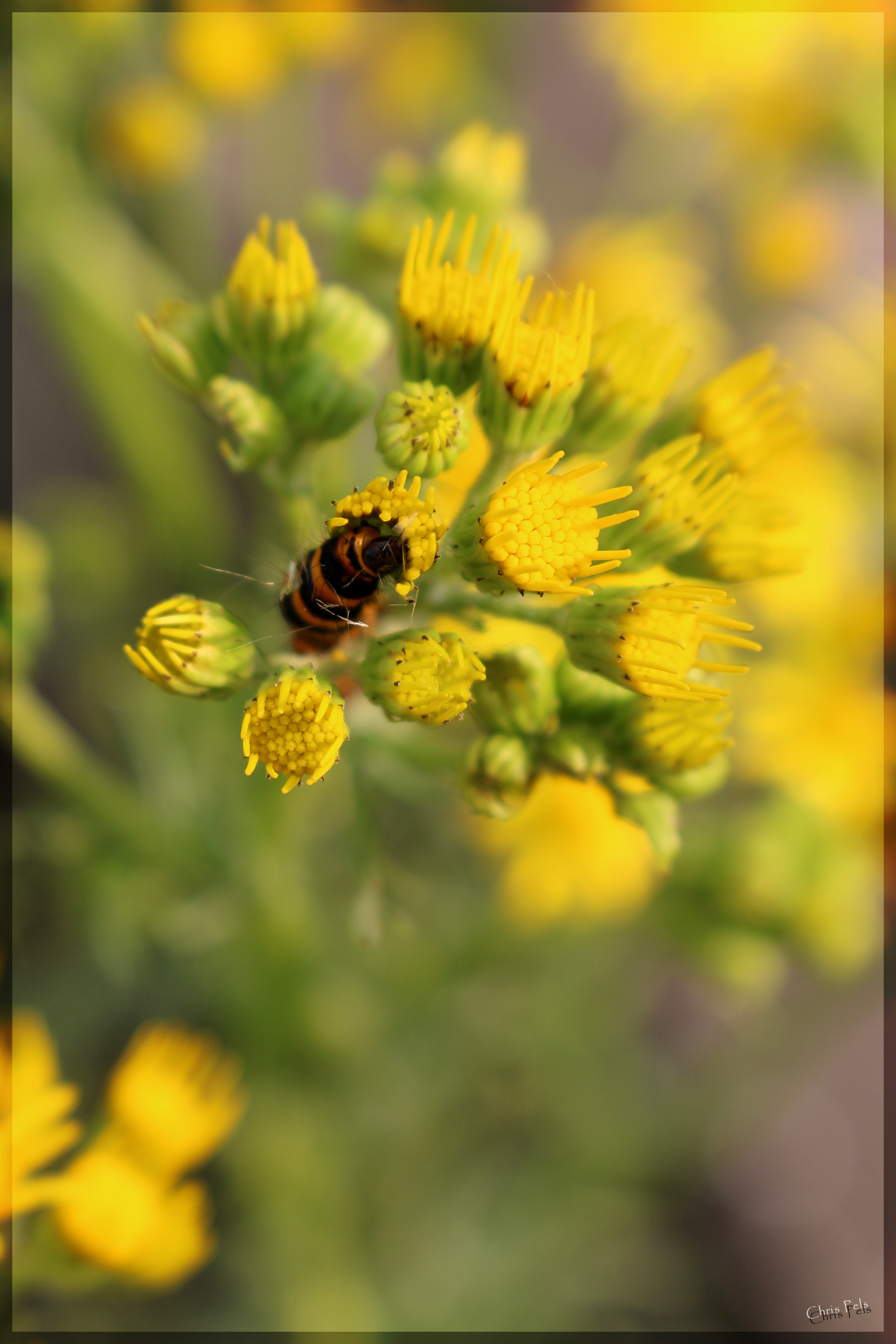
Females can lay up to 300 eggs, usually in batches of 30 or 60 on the underside of ragwort leaves. When the caterpillars (larvae) hatch they feed on and around the area of the hatched eggs but as they get bigger and moult (instars) they mainly feed on the leaves and flowers of the plant, and can be seen out in the open during the day.
Like several other Arctiidae moth larvae, the cinnabar caterpillars can turn cannibalistic. This is mainly due to lack of food, but they can eat other cinnabar larvae. Initially, the larvae are pale yellow, but later larval stages develop the jet black and orange/yellow striped colouring. They can grow up to 30mm, and are voracious eaters; large populations can strip entire patches of ragwort clean, a result of their low predation.
Often, very few survive to the pupal stage, mainly due to them completely consuming the food source before reaching maturity; this could be a possible explanation for their tendency to engage in seemingly random cannibalistic behaviour, as many will die from starvation. Additionally, the larvae are predated by species like the ants Formica polyctena.
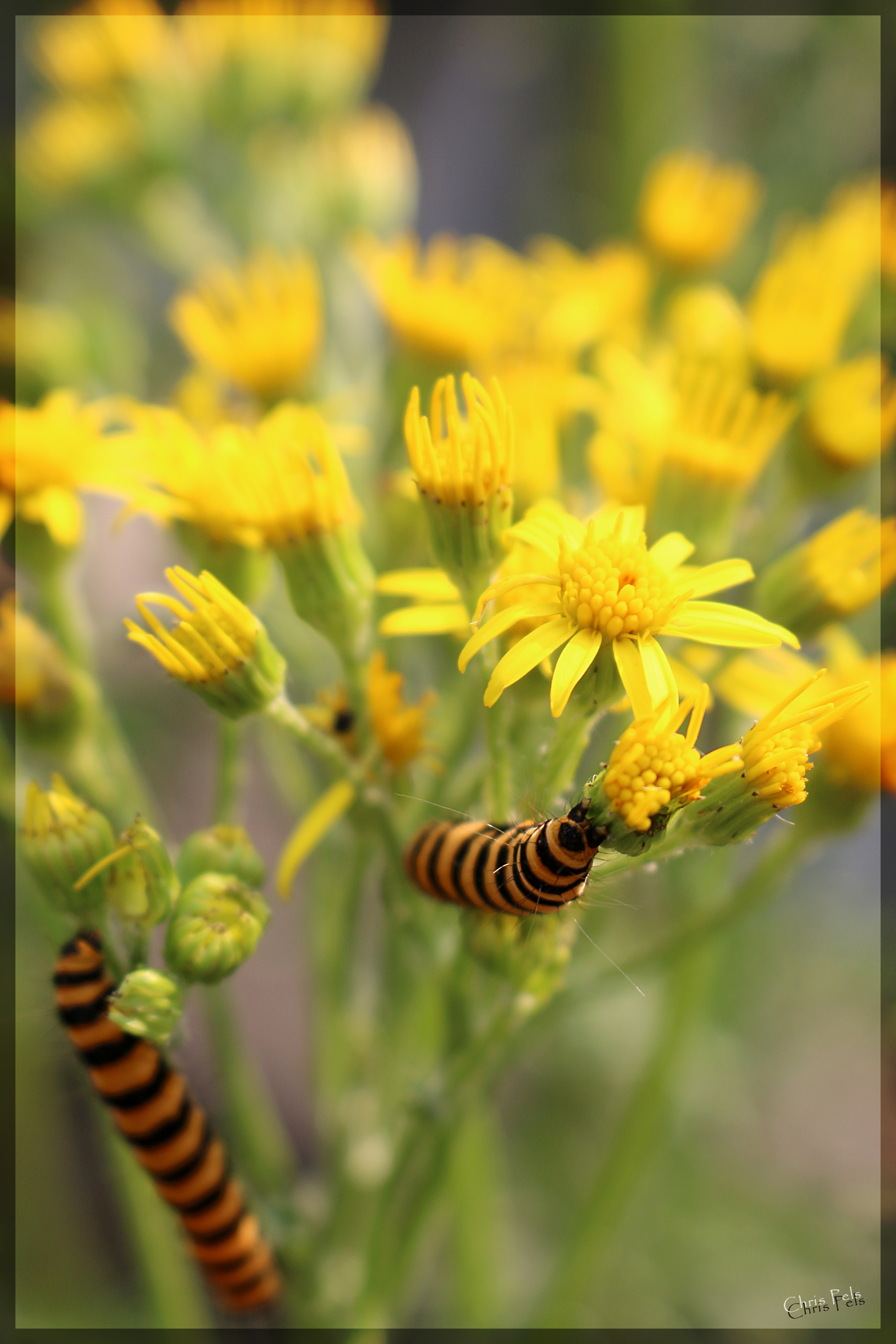
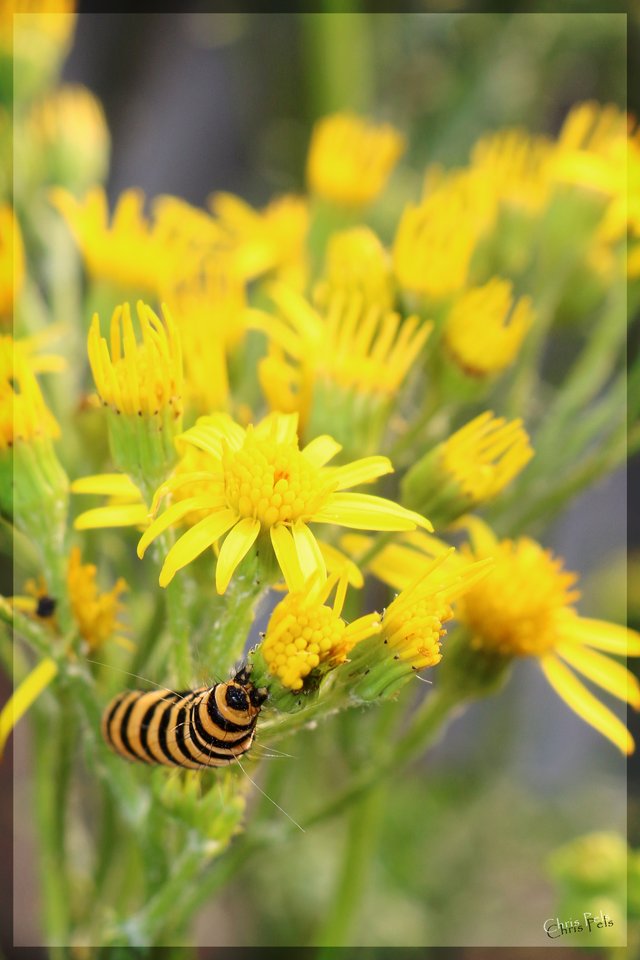
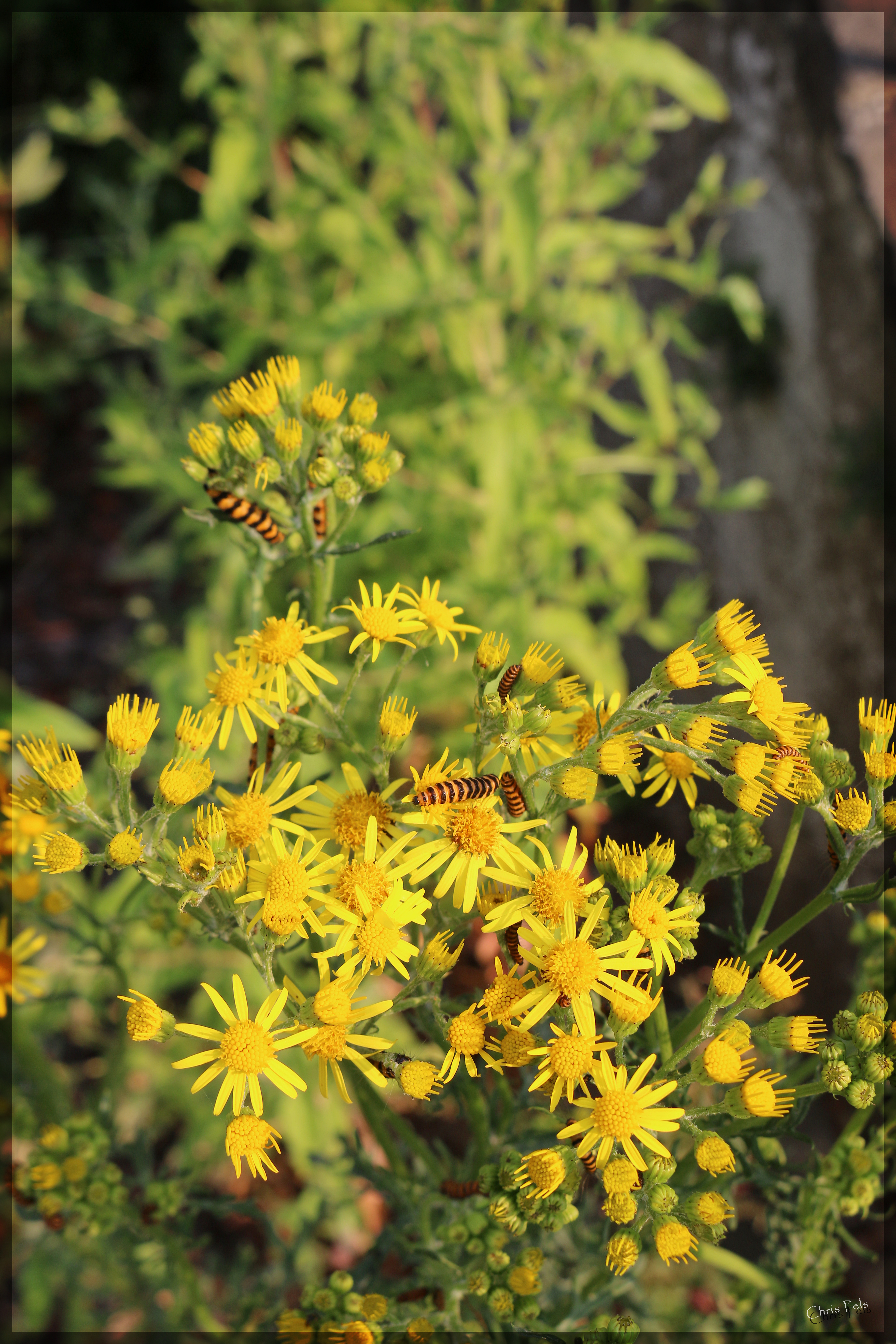

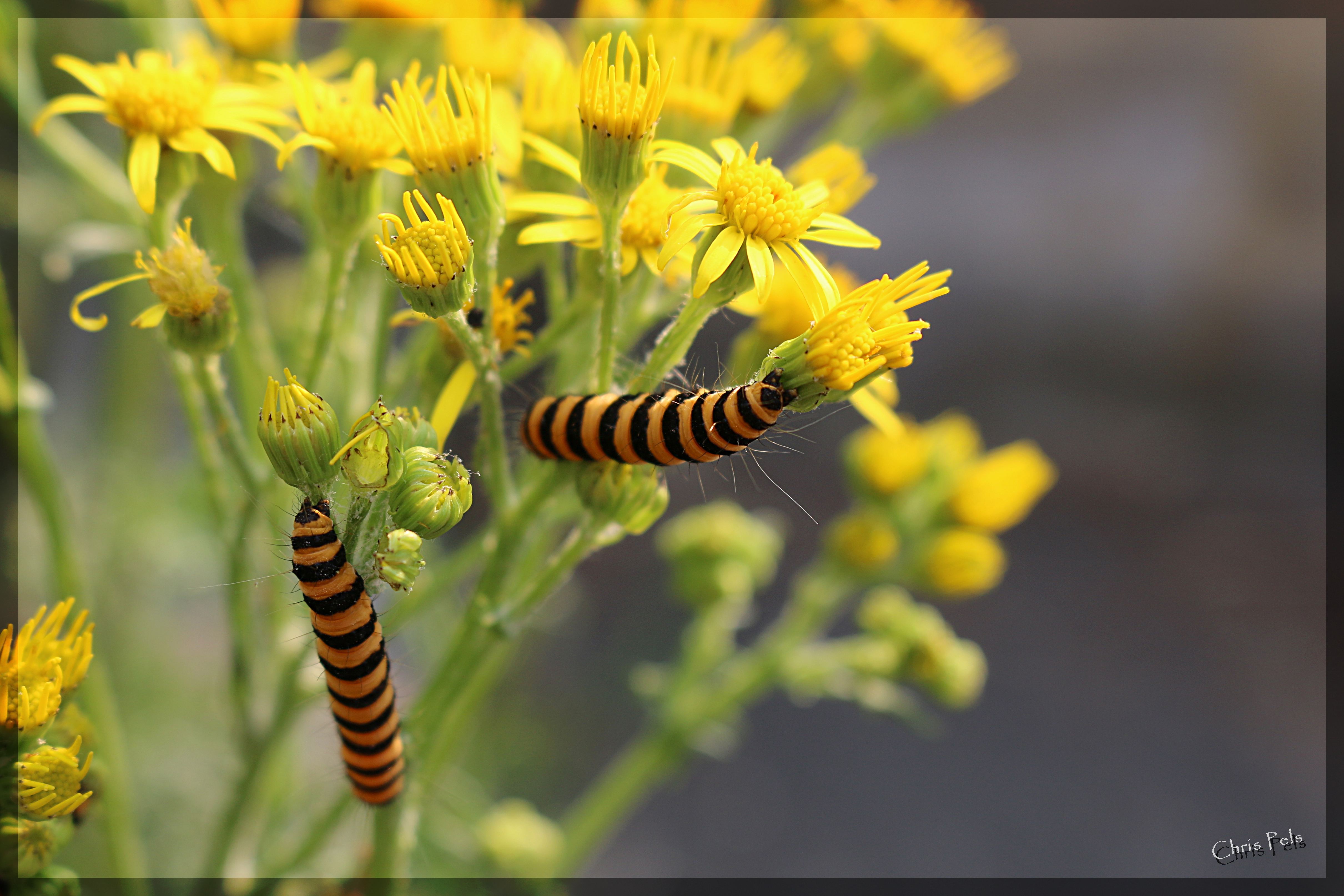

Nice pics!💛
Baby That Pilly Makes Me Want To Wiggle

> "Everybody Mambo"